HIPAA Security Rule: Essential Cybersecurity for Healthcare
In this blog, we’ll break down the essentials of the HIPAA Security Rule, its key requirements, and how healthcare organizations can strengthen cybersecurity to stay compliant and protect patient data.

Did you know that in 2024, U.S. healthcare organizations reported 725 major data breaches, each involving more than 500 records? This marks the third consecutive year with over 700 large data breaches reported to the Office for Civil Rights (OCR), highlighting an ongoing and alarming trend. These numbers highlight a growing vulnerability in healthcare data security.
With data breaches continuing to rise year after year, healthcare organizations must prioritize prevention.
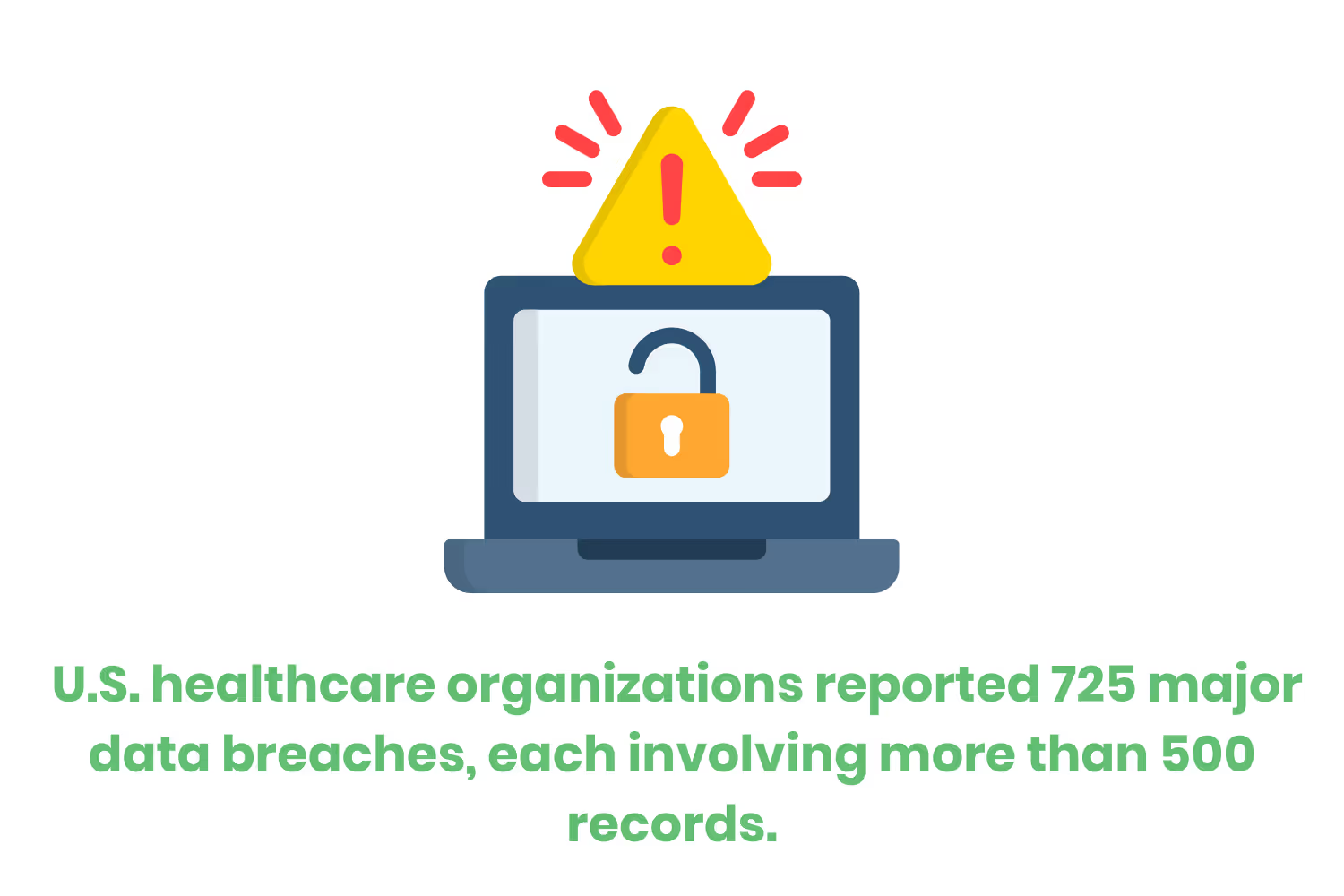
Leveraging robust cybersecurity tools and best practices isn't just recommended, it is essential to safeguard patient information and avoid costly HIPAA violations. Taking proactive steps today can safeguard sensitive electronic protected health information from future threats.
In today’s blog, we’ll break down the essentials of the HIPAA Security Rule, its key requirements, and how healthcare organizations can strengthen cybersecurity to stay compliant and protect patient data.
What is HIPAA and Why is it Important for Healthcare?
HIPAA is the foundation of healthcare data privacy and security in the United States. While it is often associated with privacy notices at medical offices, HIPAA also establishes critical rules for how patient information is stored, accessed, and shared. Before we dive into the security rule, it’s important first to understand what HIPAA stands for and why it was created.
What Does HIPAA Stand For?
HIPAA stands for Health Insurance Portability Act which was established in 1996. It was enacted by Congress to modernize how healthcare information is managed and protected.
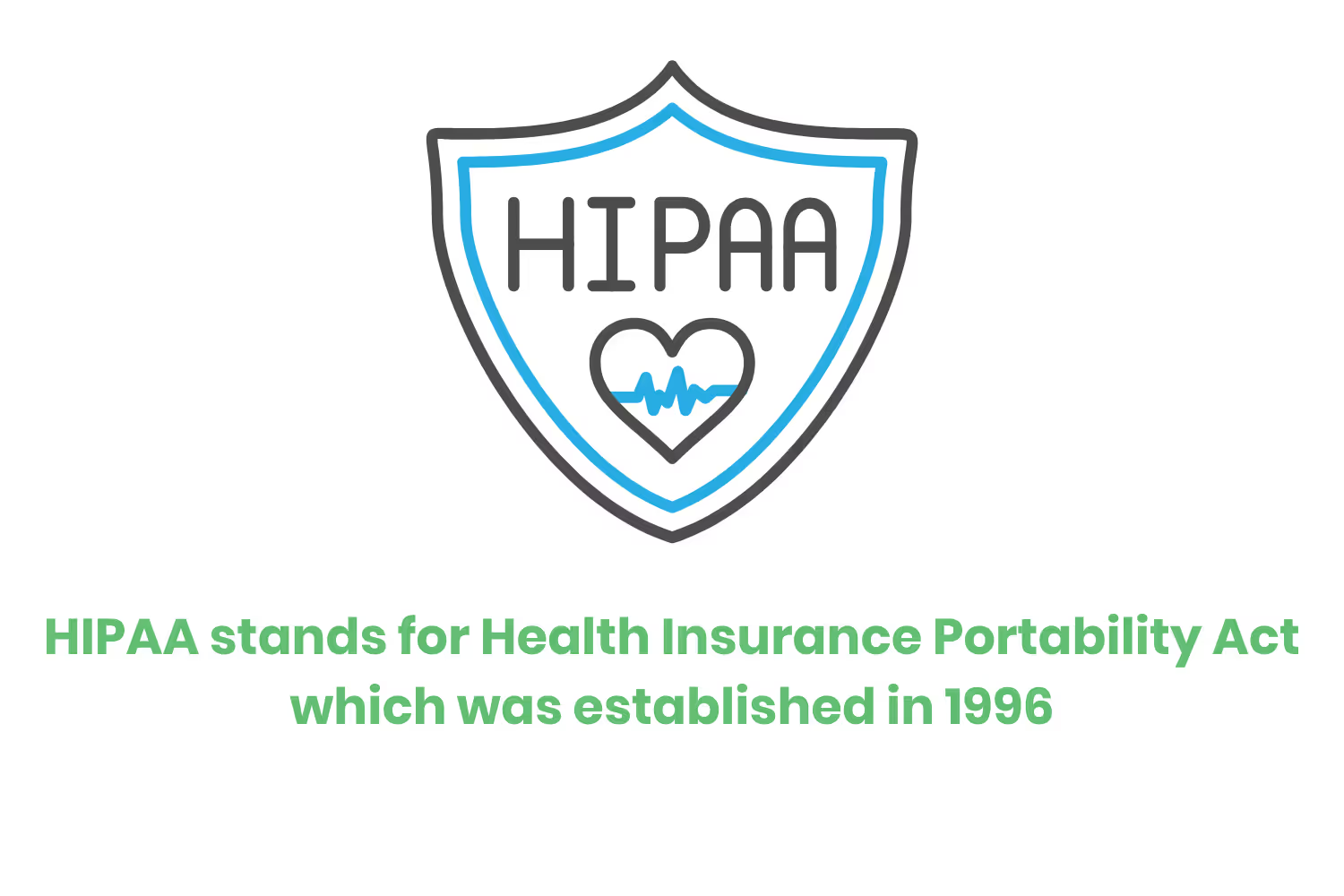
Why Was HIPAA Created?
HIPAA was designed to improve the efficiency and effectiveness of the healthcare system. One of its main goals is to protect patient privacy by establishing national standards for how health information is handled, primarily through the HIPAA Privacy Rule and supported by the Security Rule for electronic data. As healthcare organizations began adopting electronic records, HIPAA also introduced specific security measures to safeguard sensitive information. These measures help reduce fraud, prevent abuse, and protect against unauthorized access to electronic protected health information.
Understanding the HIPAA Security Rule
The HIPAA security rule is one of the most critical components of HIPAA compliance. The security rule outlines how electronic protected health information (ePHI) must be protected and it sets the foundation for secure data practices in healthcare. Before we dive into the technical and administrative safeguards, it's important to understand what the rule covers and who it applies to.
What does the HIPAA Security Rule Aim to Protect?
The HIPAA security rule aims to protect the patient's confidentiality, integrity, and the availability of electronic protected health information. This means ensuring that patient data is kept private, accurate, and accessible to authorized individuals when needed.
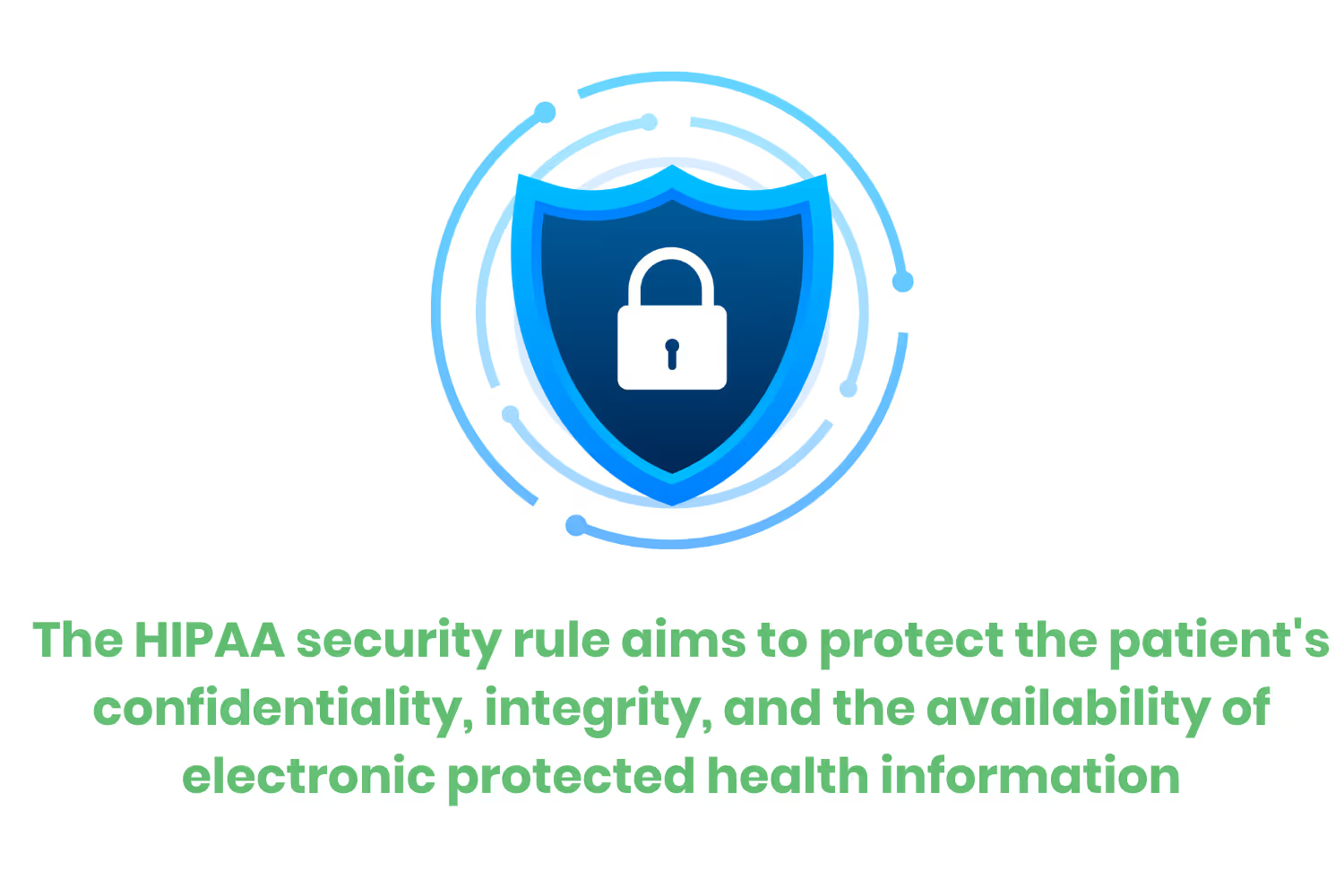
Who Must Comply with The HIPAA Security Rule?
Now that you have a good understanding about what HIPAA Security Rules are, let's talk about who must comply with it. The security rule applies to two main groups: Covered Entities and Business Associates.
Covered Entities:
Covered entities include healthcare providers, think doctors, clinics, and hospitals. Other entities are health plans and healthcare clearinghouses.
Business Associates:
Business Associates include any third-party vendor or organizations that create, receive, or transmit electronic protected health information on behalf of a healthcare provider. For example, you can think of billing companies, IT services providers, and EHR vendors.
An easy way to determine if your organization needs to comply with HIPAA’s security rules is this:
- If you work with electronic protected health information, it's safe to assume you need to comply.
How Does the HIPAA Security Rule Define Electronic Protected Health Information (ePHI)?
Before we dive into what electronic protected health information or ePHI is considered, let's get a basic definition. ePHI is considered any personal information that is sent, received, or stored, and can be used to identify an individual.
What is considered ePHI?
We already briefly went over what ePHI is, so let’s talk about what’s considered ePHI. This includes electronic health records, digital or physical lab results, billing and insurance claims stored in software, and communications that include patient information.
If the data is electronic, identifiable, and health-related, it is considered ePHI and must be protected.
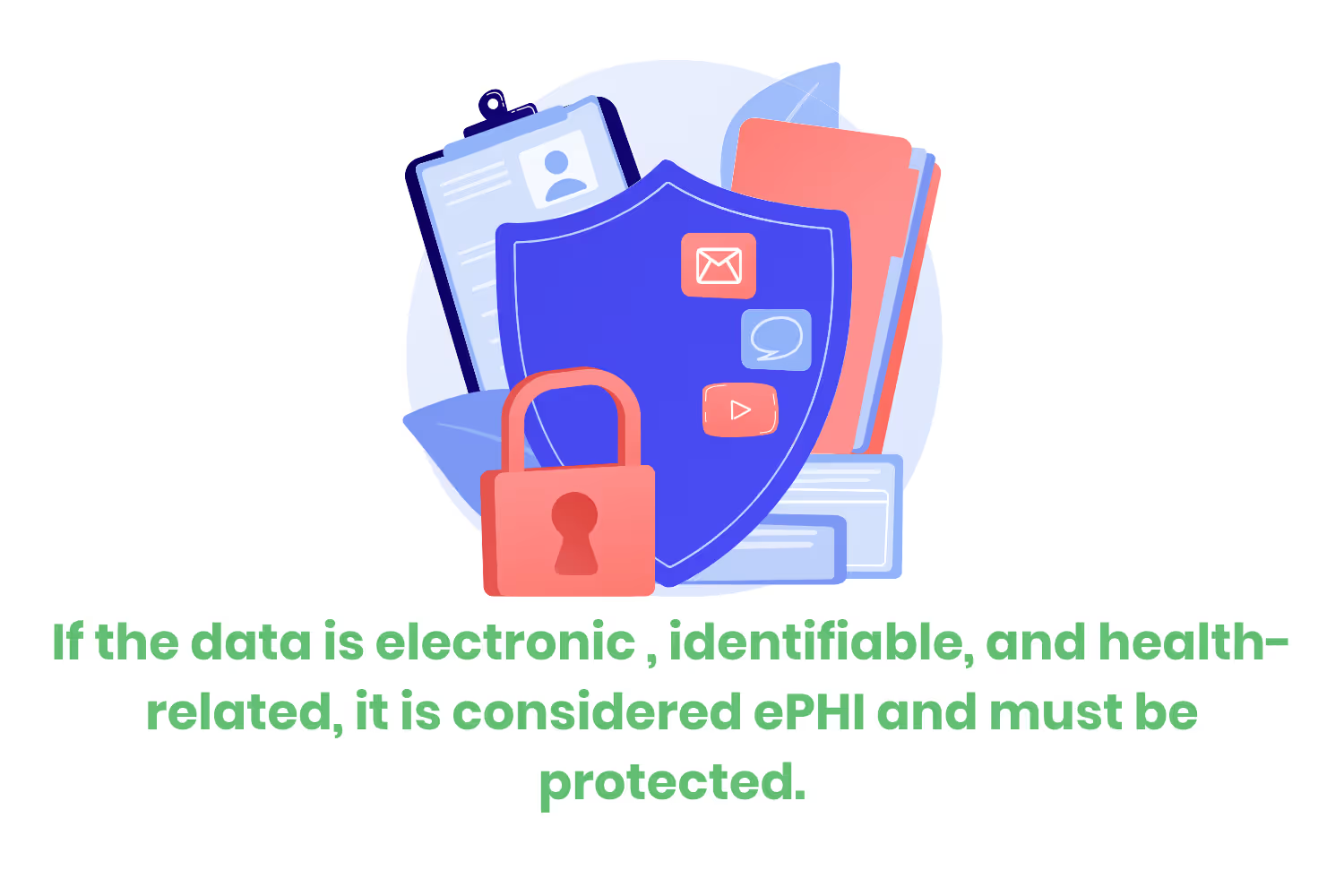
Required Policies and Procedures for Compliance
To ensure each organization is complying with HIPAA security rules, organizations should have safeguards in place. There are two main safeguards organizations need to pay attention to, physical and technical, so let's break them down.
Physical Safeguards
Physical safeguards are steps your organization can take to protect the places and equipment that store physical data. Here are three physical safeguards that organizations can implement to protect patient information
Controlling Who Enters the Building
This not only protects employees but also the areas where the patient data is kept. Organizations can utilize key cards, security badges, locked doors, or visitor logs to ensure that only authorized personnel can access where the patient data is collected.
Secure Workstations
The computers that have quick access to patient information should be secured when not in use. In case someone leaves their desk with the computer unlocked, there should be a setting that automatically locks the computer after a set time.
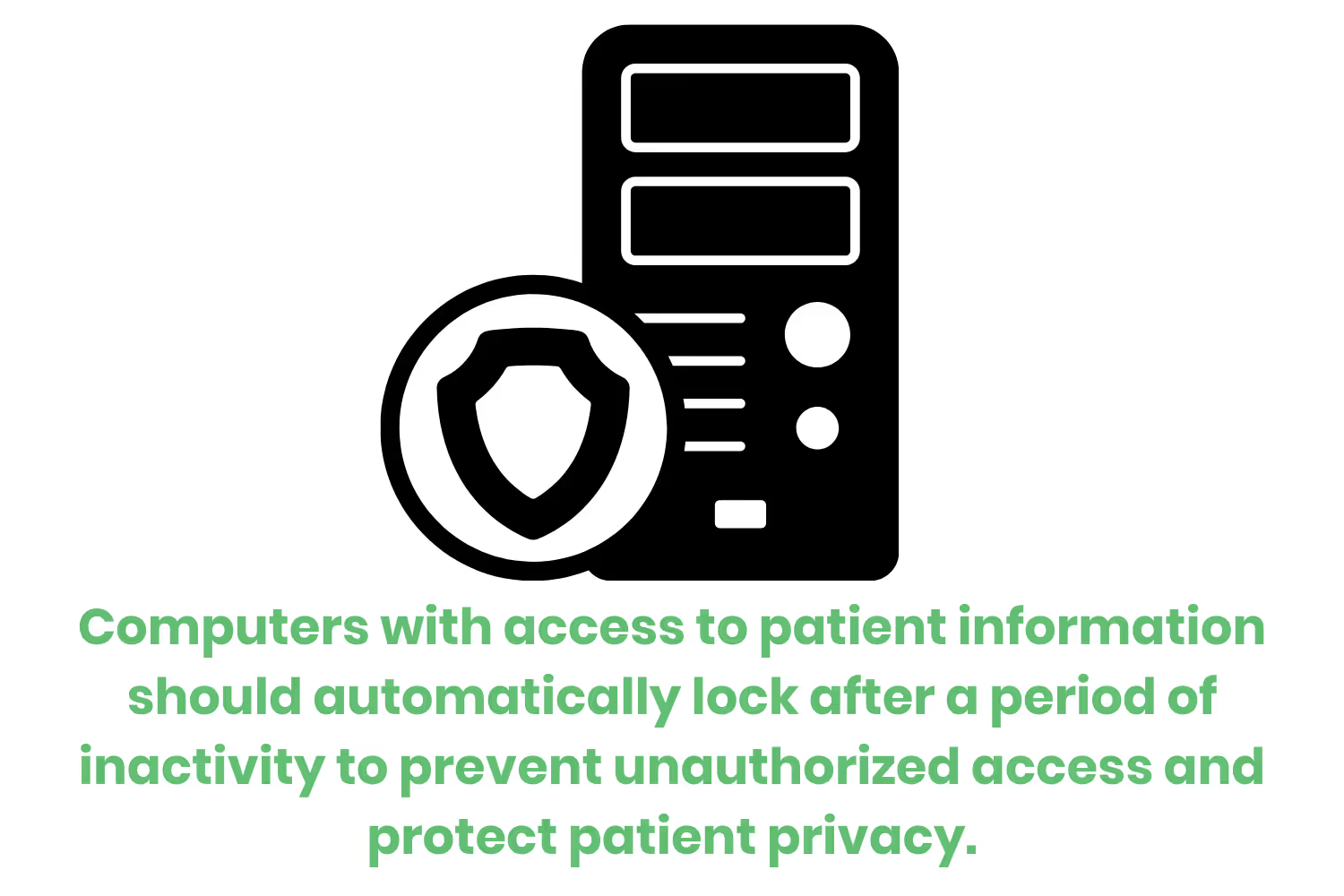
Properly Handling Devices
Devices you utilize will not last forever, so having a protocol to wipe and destroy old computers is important. If you do not do that someone could very easily access the patient information leading to a violation.
Technical Safeguards
Technical safeguards are tools or settings that your organization can use to protect patient information. This ensures only authorized personnel will see the patient’s private information.
Limited Access to Information
Not everyone who works for a healthcare organization needs access to patient information. It is important to limit the employees that can access it and ensure they have thorough training.
Monitor Activity
Having an active record of who logs in, what they do, and what time. This information helps identify any suspicious activity that may not have been caught without the record.
Cybersecurity Requirements Under the HIPAA Security Rule
Meeting the cybersecurity demands of the HIPAA Security Rule isn’t just a checklist, it requires a coordinated, ongoing effort. As cyber threats grow more advanced and regulators demand stronger compliance, healthcare organizations need tools that streamline oversight, automate safeguards, and deliver real-time visibility. That’s where a GRC (Governance, Risk, and Compliance) platform becomes essential.
A modern GRC platform simplifies HIPAA compliance by centralizing policies, procedures, risk assessments, training, and vendor oversight, all in one place. Instead of relying on scattered documents or manual processes, a GRC system empowers organizations to implement and maintain cybersecurity measures with clarity and control.
What Cybersecurity Threats Do Healthcare Organizations Face?
Cybersecurity threats evolve rapidly, and healthcare organizations remain one of the top targets for cybercriminals. Common threats include:
- Phishing and Social Engineering: Staff members are often targeted by deceptive emails or phone calls that lead to credential theft or unauthorized access.
- Ransomware: Attackers encrypt critical systems and demand payment to restore access, putting both patient care and data integrity at risk.
- Outdated Systems and Software: Legacy technologies or unpatched software leave vulnerabilities open to exploitation.
- Insider Threats: Whether intentional or accidental, employees can become a major source of breaches.
- Third-Party Risk: Vendors and business associates often have access to ePHI, and their lack of security controls can compromise your own organization.
A GRC platform helps healthcare organizations document, track, and remediate these threats through automated risk monitoring, incident response workflows, and continuous policy reviews.
How Can Organizations Assess Their Cybersecurity Risks?
HIPAA requires regular risk assessments to identify vulnerabilities, but many organizations struggle with how to do this consistently and thoroughly. A GRC platform enables:
- Centralized Risk Analysis: Map out where ePHI lives, how it flows, and which systems or roles have access, all in a centralized dashboard.
- Automated Risk Scoring: Assign risk levels and track them over time using scoring frameworks built into the platform.
- Evidence Tracking: Document mitigation efforts, attach proof, and maintain an audit-ready trail at all times.
- Vendor Risk Management: Monitor business associate agreements, track third-party security controls, and log remediation efforts in one place.
- User-Friendly Reports: Generate up-to-date risk summaries and compliance status reports for stakeholders and auditors with just a few clicks.
With a GRC platform, your risk assessment doesn’t become outdated the moment it’s completed, it becomes a living, breathing part of your security program.
What Specific Cybersecurity Measures Must Be Implemented?
The HIPAA Security Rule outlines required safeguards across technical, physical, and administrative areas. A GRC platform streamlines the implementation and maintenance of these controls by providing:
- Policy Libraries and Templates: Adopt pre-built HIPAA-aligned policies or customize your own and assign reviews and attestations to staff automatically.
Access Management Oversight: Track and manage user access controls, including role-based permissions and multi-factor authentication. - Audit Trails and Logging: Monitor access logs and system changes in one place, making it easier to identify unusual activity or compliance gaps.
- Automated Training Delivery: Assign required cybersecurity and HIPAA training modules, monitor completion, and retain certificates for every staff member.
- Incident Response Plans: Create and maintain incident response workflows that guide your team step-by-step when a breach or security event occurs.
- Business Continuity & Backup Protocols: Document your data backup and disaster recovery plans, an often overlooked but critical requirement under HIPAA.
When these efforts are centralized in a GRC platform, organizations gain the structure, visibility, and accountability needed to protect ePHI while staying compliant.
What Are The Consequences of Non-Compliance with The HIPAA Security Rule?
Failing to comply with HIPAA security rules will have serious consequences for healthcare organizations. There are two categories of consequence, Civil& Criminal, and Reputational & Operational Penalties.
Civil Penalties
The Department of Health and Human Services or HHS, can fine organizations depending on the severity of the negligence. The fines can range from thousands or millions of dollars.
Criminal Penalties
In situations where there was intentional misuse or theft of patients’ information, it may result in criminal charges. The charges can be a mix of hefty fines and/or jail time.
Reputational Penalties
A breach in patient data will impact the trust of your patients, partners, and regulators. This can lead to a loss of business and difficulties in recruiting new patients.
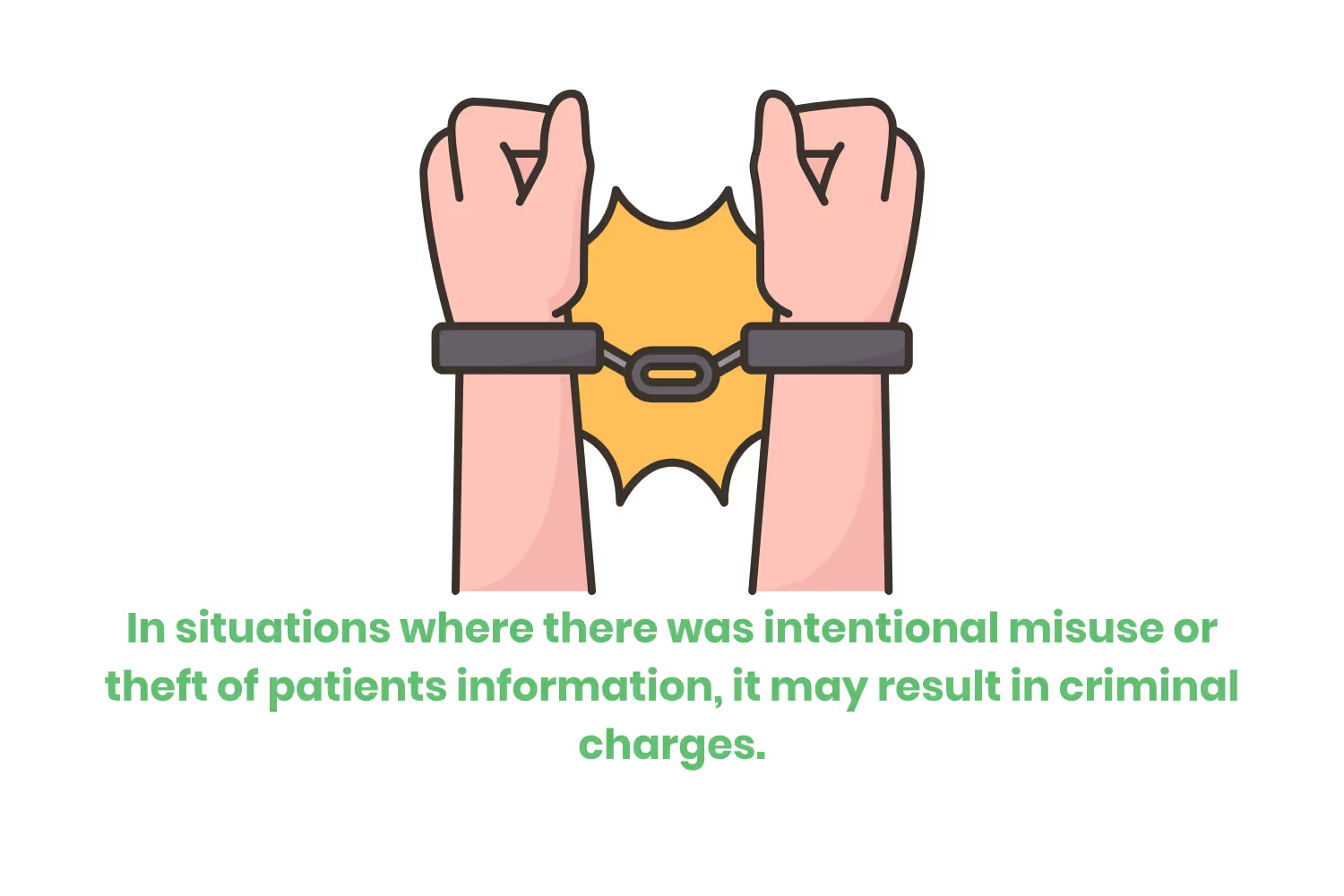
How the HICP Framework Supports HIPAA Security Rule Compliance
In addition to the required safeguards under HIPAA, healthcare organizations can strengthen their cybersecurity programs by using voluntary resources like the Health Industry Cybersecurity Practices (HICP) framework.
Developed by the 405(d) Task Group under the Department of Health and Human Services, HICP addresses the most common cyber threats facing the healthcare sector and pairs them with ten practical best practices. These practices are scalable based on the size of your organization—so whether you're a small clinic or a large health system, the recommendations are actionable and relevant.
HICP is especially valuable because it focuses on the real-world intersection between the HIPAA Privacy Rule and the Security Rule. By identifying known vulnerabilities and offering solutions, it helps organizations build a cybersecurity foundation that’s both compliant and resilient.
Implementing HICP practices helps your organization:
- Address the top five healthcare cyber threats (including ransomware, phishing, and insider threats)
- Reduce the risk of both internal and external data breaches
- Demonstrate a proactive approach to HIPAA compliance
Even though HICP is not mandatory, it shows that your organization is actively managing cybersecurity risks, which strengthens your HIPAA compliance posture.
This is where a GRC platform plays a key role. By integrating the HICP framework into your platform, you can:
- Map controls and safeguards to HICP best practices
- Track adoption progress across departments
- Assign tasks and training related to HICP
- Store documentation for audits and risk reviews
Rather than treating HICP as a separate initiative, a GRC platform helps embed it into your everyday compliance workflow, bridging the gap between theory and practice.
Conclusion
Protecting patient information is more than just a legal requirement, it's an essential part of providing patient care. The HIPAA Security Rule requires that electronic patient information stays safe through physical and technological safeguards. Whether you are a provider or a vendor, taking proactive measures is essential to protecting yourself and your patients.
Emphasize your product's unique features or benefits to differentiate it from competitors
In nec dictum adipiscing pharetra enim etiam scelerisque dolor purus ipsum egestas cursus vulputate arcu egestas ut eu sed mollis consectetur mattis pharetra curabitur et maecenas in mattis fames consectetur ipsum quis risus mauris aliquam ornare nisl purus at ipsum nulla accumsan consectetur vestibulum suspendisse aliquam condimentum scelerisque lacinia pellentesque vestibulum condimentum turpis ligula pharetra dictum sapien facilisis sapien at sagittis et cursus congue.
- Pharetra curabitur et maecenas in mattis fames consectetur ipsum quis risus.
- Justo urna nisi auctor consequat consectetur dolor lectus blandit.
- Eget egestas volutpat lacinia vestibulum vitae mattis hendrerit.
- Ornare elit odio tellus orci bibendum dictum id sem congue enim amet diam.
Incorporate statistics or specific numbers to highlight the effectiveness or popularity of your offering
Convallis pellentesque ullamcorper sapien sed tristique fermentum proin amet quam tincidunt feugiat vitae neque quisque odio ut pellentesque ac mauris eget lectus. Pretium arcu turpis lacus sapien sit at eu sapien duis magna nunc nibh nam non ut nibh ultrices ultrices elementum egestas enim nisl sed cursus pellentesque sit dignissim enim euismod sit et convallis sed pelis viverra quam at nisl sit pharetra enim nisl nec vestibulum posuere in volutpat sed blandit neque risus.

Use time-sensitive language to encourage immediate action, such as "Limited Time Offer
Feugiat vitae neque quisque odio ut pellentesque ac mauris eget lectus. Pretium arcu turpis lacus sapien sit at eu sapien duis magna nunc nibh nam non ut nibh ultrices ultrices elementum egestas enim nisl sed cursus pellentesque sit dignissim enim euismod sit et convallis sed pelis viverra quam at nisl sit pharetra enim nisl nec vestibulum posuere in volutpat sed blandit neque risus.
- Pharetra curabitur et maecenas in mattis fames consectetur ipsum quis risus.
- Justo urna nisi auctor consequat consectetur dolor lectus blandit.
- Eget egestas volutpat lacinia vestibulum vitae mattis hendrerit.
- Ornare elit odio tellus orci bibendum dictum id sem congue enim amet diam.
Address customer pain points directly by showing how your product solves their problems
Feugiat vitae neque quisque odio ut pellentesque ac mauris eget lectus. Pretium arcu turpis lacus sapien sit at eu sapien duis magna nunc nibh nam non ut nibh ultrices ultrices elementum egestas enim nisl sed cursus pellentesque sit dignissim enim euismod sit et convallis sed pelis viverra quam at nisl sit pharetra enim nisl nec vestibulum posuere in volutpat sed blandit neque risus.
Vel etiam vel amet aenean eget in habitasse nunc duis tellus sem turpis risus aliquam ac volutpat tellus eu faucibus ullamcorper.
Tailor titles to your ideal customer segment using phrases like "Designed for Busy Professionals
Sed pretium id nibh id sit felis vitae volutpat volutpat adipiscing at sodales neque lectus mi phasellus commodo at elit suspendisse ornare faucibus lectus purus viverra in nec aliquet commodo et sed sed nisi tempor mi pellentesque arcu viverra pretium duis enim vulputate dignissim etiam ultrices vitae neque urna proin nibh diam turpis augue lacus.



![[ANSWERED] What is a Risk Register?](https://cdn.prod.website-files.com/67e2b8210878abcba6f91ae6/68acfd6e02390e12a4383c6f_whatisariskregister_1223.avif)
